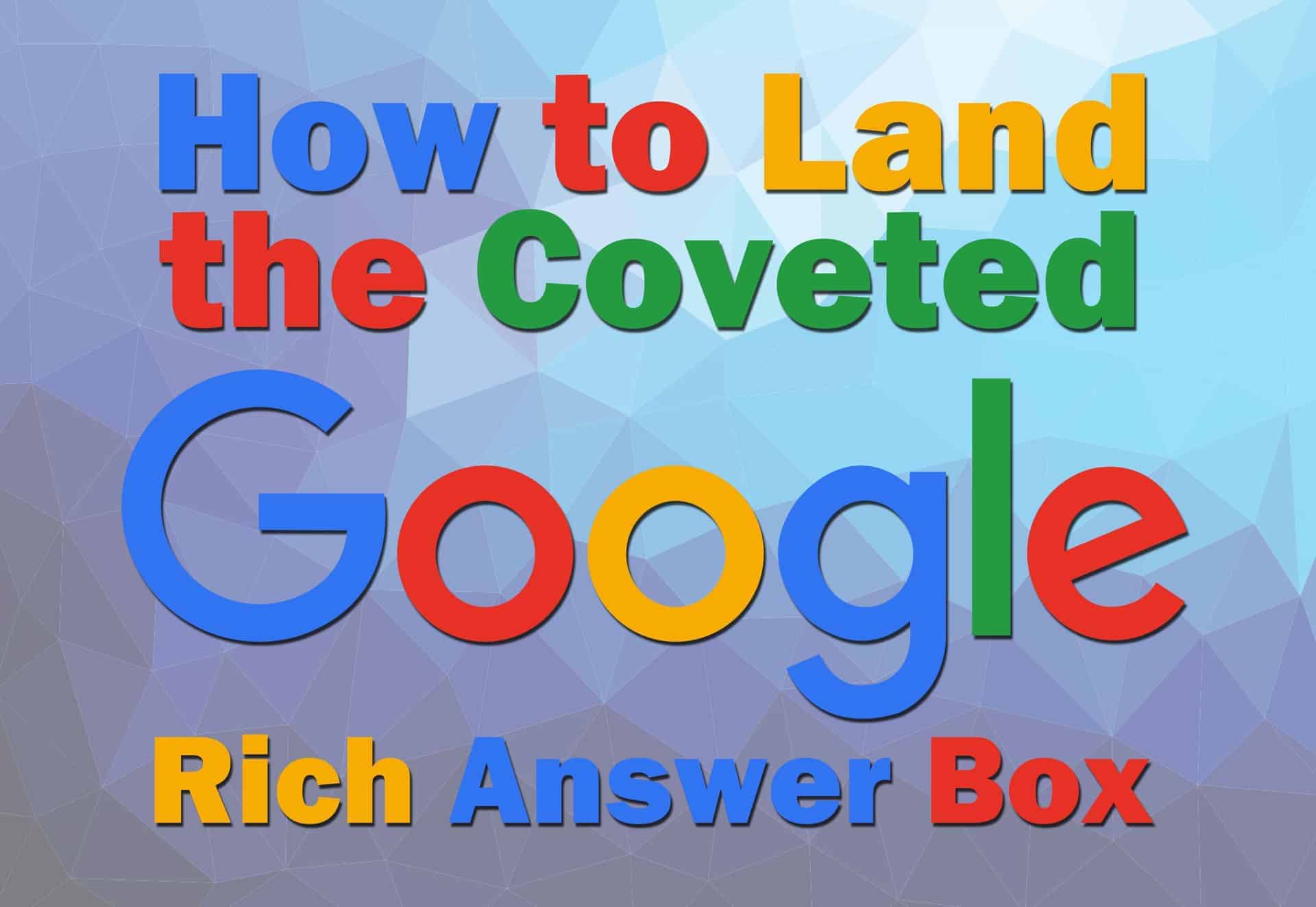
How To Land the Coveted Google Rich Answer Box

Determine Common Questions
If you’ve never done research about the most commonly asked questions concerning your topic, you’re in for a treat. There are a variety of online programs and sites that can be used to quickly list possible queries associated with your keywords and the likelihood that answers already exist to those questions. Unless your SERP rating is already high, you’ll want to look for keyword searches that are less common and less likely to already be answered by other sites. The best way to do this is by including terms such as “where,” “why” and “how” with your keywords to find new question formats you may have not already considered. As you discover questions that have a low amount of competition from other websites, you’ll be able to incorporate those topics and keywords in your own SEO content to give your work a better chance at being featured. The type of questions you choose to answer should be those that allow you to offer a brief, succinct answer first and then expound in great depth, making it easy for Google to quickly locate a comprehensive answer within your page.
Another easy way to come up with questions is by looking at the bottom of Google searches in the “People also ask” or “Related Searches” box for other commonly asked questions about your topic. Typing in a portion of your question and taking a look at the drop down list for ideas of what other people have asked is yet another way to study common topics and generate ideas on how to best phrase your own questions. Doing the research to find out what searches are being made will give you a better idea about the queries that will likely lead searchers to your site. Specifying that research to focus on those searches that have low competition and don’t already have a Google answer box will improve your chances of being featured and increase the number of clicks your page receives.
Integrate Q&A

Google wants straightforward, succinct answers, and one of the best ways an article writer can provide that is with a question and answer series within the content. That doesn’t mean you need an entire page of queries and replies: simply integrate clear, descriptive language in your text that provides answers to common questions on your topic. There are a few different ways to format this:
- You may choose to place the question and answer at the top of your page and then expand further throughout the page.
- You could create a header that includes the common question and use the paragraph to answer each query.
- You can ask a question and answer it at the top of the page, then include variations of that question and answer scattered throughout the text.
This post gives additional guidance on how to arrange this sort of information in your text so that little Google bots can easily locate the answer and slap it in the white box.
Implement Entities
The term “entity” is not always common in the vocabulary of an article writer, yet it’s used heavily by Google to determine which pages answer which questions. While search engines do scan for certain keywords, they can also use those terms to get an idea of which entity each page is about. The subject of your page, whether it’s a name, place or object, can be revealed to semantic searches by the keywords used, allowing Google to place your page in the appropriate response list. While older methods solely searched for certain strings of keywords, many new updates are shifting to focus more on entities.
This makes it especially important to provide enough information so that your entity will be obvious to search engines and push you higher up on the list of results. Following basic SEO practices of cross-linking and using keywords in your meta descriptions, headers and title tags can provide the schema markup needed to clearly identify your article for search engines.
Improve Access
Not only does your content creation need to be top notch, but your site also needs to have easy accessibility. The mobile experience needs to be just as good as the desktop version in order to attract users and encourage Google to use your site in the answer box. Having roadblocks in either interface decreases the likelihood that your page will reach position zero.
In addition to having ease of access, the information on the page also needs to be clearly available at a glance. Using headers, images and bulleted lists will allow users to quickly scan the data to find the information they are looking for. Having long, wordy paragraphs and little to break up the page will quickly encourage users to click away from your page and try other sites, taking your ratings down and decreasing page views.
Keep Trying
Reaching position zero is not only an impressive feat, but also a difficult one. It’s something that can’t be achieved overnight, but requires sustained effort over a long period of time. By producing high quality articles with thoughtful content creation, established links, obvious entities and easy accessibility, you’ll boost your chances of getting to the top and landing the coveted Google Rich Answer Box.
- How SEO and Content Combine To Influence Buyers - December 22, 2023
- What Does a Content Marketer Do? - April 18, 2023
- Why You Should Be Building Location Pages - April 18, 2023

